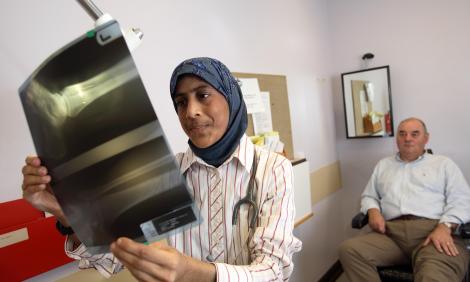Admissions tests for medical school
This page outlines the different tests used by medical schools to help them select the most suitable candidates. The test you take will depend on the medical school you apply for. Use the links to find out more about each test.
Many students get the A level grades or equivalent qualifications required for medical school, so admissions tests are another way to help select candidates with the most potential.

Most medical schools expect you to take either the University Clinical Aptitude Test (UCAT) or the Graduate Australian Medical School Admissions Test (GAMSAT), but check entry requirements on our coursefinder tool, in prospectuses or through the UCAS website.
Rather than testing your knowledge, most admissions tests mainly focus on assessing whether you have the range of mental abilities and behavioural attributes considered important for a career in medicine.
Practise, practise, practise
It’s important to practise a few tests so that you are familiar with their format, question style and requirements. Practice papers and other resources are available, including:
- UCAT practice tests and resources can be found on the UCAT website
- GAMSAT preparation materials are available (at cost) on the GAMSAT website
Look at the websites given for the relevant test to find out:
- more about the content of the test itself
- how to register
- where you sit the test and when
- test fees and information on fee waiver or reimbursement if you are likely to have difficulties paying
- how you can prepare for the test.
-
This is the most widely used test by medical (and dental) schools. The UCAT is a 2-hour computer-based test delivered in Pearson VUE test centres throughout the UK and internationally. All the questions are multiple choice.
There are sections on:
- verbal reasoning, ie your ability to think logically – 22 minutes
- quantitative reasoning, ie your ability to solve numerical problems – 26 minutes
- decision making – 37 minutes
- situational judgement – 26 minutes
Find out more on the UCAT website.
Please note that until 2019, the UCAT was called UKCAT but although the name has changed, the test content remains the same.
-
The GAMSAT is mainly used by medical schools that offer Graduate Entry Programmes. The test takes a total of 5 hours 15 minutes. There are three sections:
- humanities and social sciences – 62 multiple choice questions (100 minutes)
- written communication – two essays on socio-cultural and personal and social issues (65 minutes)
- biological and physical sciences – 75 multiple choice questions (150 minutes)
Find out more on the GAMSAT website.




